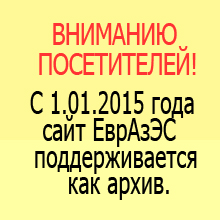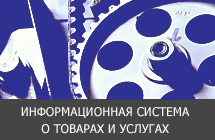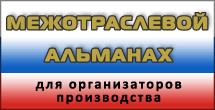|
REGULATIONS on the Inter-parliamentary Assembly of Eurasian Economic Community APPROVED by Resolution of the EurAsEC Interstate Council 13 May 2002, No. 52
REGULATIONS on the Inter-parliamentary Assembly of Eurasian Economic Community (as amended on 23 June 2006)
Chapter 1. GENERAL PROVISIONS
1. The Inter-parliamentary Assembly of the Eurasian Economic Community (hereinafter referred to as the IPA or the Assembly) in accordance with Articles 3 and 7 of the Treaty on the Establishment of the Eurasian Economic Community of 10 October 2000 (hereinafter referred to as the Treaty) is the organ of inter-parliamentary cooperation within the framework of the Eurasian Economic Community (hereinafter referred to as the Community or EurAsEC) and shall conduct within its purview affairs in pursuance of the achievement of the objects and purposes of the Community. 2. The Assembly is the legal successor to the Inter-parliamentary Committee operating under the Treaty between the Republic of Belarus, the Republic of Kazakhstan, the Kyrgyz Republic and the Russian Federation on increased Integration in the Economic and Humanitarian Fields of 29 March 1996 and the Treaty on a customs union and a common economic space of 26 February 1999.
Chapter II. OBJECTIVES, PURPOSES AND COMPETENCE OF IPA
1. The objectives of the IPA shall consist of legal support of the operation of the Eurasian Economic Community, harmonization (convergence, unification) of the national legislation of the Community member states and bringing it into line with the treaties concluded within the framework of EurAsEC in pursuance of the achievement of the objects and purposes of the Community. 2. Main goals of the Assembly: – formation of a single legal policy of EurAsEC; – coordination of legislative efforts of the national parliaments in pursuance of the achievement of the objects and goals of EurAsEC; – assistance in creation of organizational and legal conditions for bringing the national legal codes of the Community member states into line with the treaties concluded within the framework of EurAsEC; – organization of inter-parliamentary cooperation. a) elaborating and approving drafts of the fundamentals of legislation relating to basic legal relations and sending it to the Integration Committee, to be subsequently introduced, as appropriate, to the Interstate Council of EurAsEC for review; b) elaborating and adopting model laws to serve as a basis for elaboration of the national legal codes by the Community member states; c) reviewing questions relating to adjustment of the legal codes of the Community member states to the treaties concluded within the framework of EurAsEC; d) developing recommendations on harmonization (convergence, unification) of the legal codes and proposals on synchronization of procedures for adoption of laws at the parliaments of the Community member states; e) reviewing queries and recommendations of the Interstate Council and the Integration Committee, and reports of the Integration Committee on progress in the achievement of the Community’s objects and purposes; f) submitting
recommendations to the Interstate Council, queries and recommendations – to the
Integration Committee and the parliaments of EurAsEC member states, and queries
– to the g) recommending that the parliaments of the Community member states grant priority review to legislative acts that must be adopted or amended in order to have resolutions of the Interstate Council and the Inter-parliamentary Assembly, and international treaties concluded within the framework of the Community, implemented; h) collating and systematizing legal information and ensuring exchange thereof between the parliaments of the Community member states; i) ensuring interaction between the parliaments of the Community member states; k) interacting with international parliamentary and other organizations, concluding cooperation agreements with them; l) appointing, on a
proposal by the Interstate Council, judges to the m) sending to the Interstate Council annual reports on its activities relating to legal support of the development of the Community; n) contributing to the drawing-up and revision of the Community’s budget and performing other functions in accordance with its objects and purposes.
Chapter III. COMPOSITION AND PROCEDURES FOR ESTABLISHMENT OF IPA
1. The IPA is composed of parliamentarians delegated by the parliaments of the Community member states in accordance with by-laws and procedural rules thereof. Scope of authority of the delegated parliamentarians and duration of their tenure are determined by the national parliaments. When necessary, the authority of a member of the Assembly may be delegated to another envoy of the national parliament. 2. The headcount of parliamentary delegations at the IPA is as follows: Republic of Belarus – 16 parliamentarians, Republic of Kazakhstan – 16 parliamentarians; Kyrgyz Republic – 8 parliamentarians; Russian Federation – 42 parliamentarians; Republic of Tajikistan – 8 parliamentarians; Therewith, every parliamentarian shall have one vote. 3. The Chairman of the Assembly and his deputies are elected at a meeting of the Assembly from the ranks of the heads of the parliaments (chambers of parliaments) of the Community member states in the manner prescribed in the Rules of Procedure of the Assembly. When the Chairman of the IPA is absent, his duties are performed by the Deputy of the Chairman from the Community member state whose name in Russian alphabetical order follows that of the EurAsEC member state from which the Chairman is elected. 4. The IPA form standing and provisional committees are composed of members of the IPA. Chapter IV. ORGANISATION AND OPERATIONAL PROCEDURES OF IPA
1. Meetings of the IPA are held once a year. A meeting of the IPA shall be deemed to have a quorum if it is attended by a minimum of 50% of the parliamentarians – IPA members from each parliament. 2. With respect to questions within its purview, the IPA adopt resolutions by a qualified, two-thirds majority of votes from the number of the Assembly members present at the meeting, and with respect to procedural questions, by a simple majority of votes. 3. Resolutions adopted by the IPA, as well as declarations, appeals, recommendations and proposals are sent to the parliaments of the Community member states and EurAsEC organs. 4. Parliamentary delegations from EurAsEC member states inform the Assembly about results of review by their parliaments of relevant model laws. 5. Administrative support of the IPA is provided by the Bureau of the Inter-parliamentary Assembly. 6. The Secretariat of the Inter-parliamentary Assembly is the permanent executive body of the IPA and the Bureau of the IPA. 7. The Bureau of the IPA and the standing committees may enlist the services of experts and academic consultants from EurAsEC member states for the drafting of documents of the IPA. 8. Terms and procedures for the conduct of meetings of the IPA, for formation of the Bureau of the IPA and the standing and provisional committees and other organs of the IPA, and administration of its work shall be set out in the Rules of Procedure of the Inter-parliamentary Assembly, approved by the Inter-parliamentary Assembly. 9. The following parties may participate in meetings of the IPA: members of the Interstate Council and the Integration Committee; permanent representatives of EurAsEC member states; judges of the Community Court; and officials and employees of the Secretariat of the Integration Committee. Plenipotentiaries of states and international organizations granted the status of observer with EurAsEC also may participate in meetings of the IPA and receive information about resolutions adopted. 11. Russian is the IPA working language. Chapter V. BUREAU OF IPA
1. The Bureau of the IPA is composed of members of the parliaments of the Community member states (two members from each parliament), including the Chairman of the Assembly and his deputies. 2. The Chairman of the Assembly guides the Bureau of the IPA. 3. The Chairman of the Assembly participates in meetings of the Interstate Council and the Integration Committee, representing thereat the position of the Assembly with respect to questions relating to the development of the Community. 4. The Bureau of the Assembly holds meetings as necessary, but at least two times every year. 5. Resolutions at meetings of the Bureau of the IPA are adopted by consensus, with each parliamentary delegation having one vote. 6. Chairmen of the standing committees of the Assembly and the Executive Secretary of the IPA participates in meetings of the Bureau of the Assembly. 7. The Bureau of the IPA performs the following functions within its purview: a) convening meetings of the Assembly and introducing proposals as to the agenda of the meetings; b) introducing for review by the Assembly proposals as to candidatures for the office of Chairman of the Assembly and his deputies; c) coordinating activities of the standing committees and other organs of the IPA; d) determining the structure and operational procedures of the Secretariat of the IPA in accordance with the headcount approved by the Interstate Council; e) monitoring implementation of resolutions adopted by the IPA, and other functions as assigned by the Assembly. 8. The Bureau of the IPA appoints the Executive Secretary to guide the Secretariat of the IPA. 9. The Secretariat of the IPA interacts with the Secretariat of the Integration Committee with respect to questions of harmonization (convergence, unification) of the national legal codes, legal groundwork for integration, legislative work and other questions. 10. Envoys of the member states at the IPA and employees of the Secretariat of the IPA enjoy privileges and immunities within limits as established by the Convention on Privileges and Immunities of Eurasian Economic Community of 31 May 2001. 11. Employees of the Secretariat of the IPA are governed by the Regulations on Employees of EurAsEC Organs in their work.
Chapter VI. FINANCIAL AND OTHER SUPPORT FOR THE WORK OF IPA
2. Informational, legal, logistical and organizational support for the IPA are provided by the Secretariat of the IPA. 3. The Executive Secretary of the IPA is the manager of financial resources of the Assembly.
Chapter VII. FINAL PROVISIONS
2. The present Regulations are put into effect after the Interstate Council has approved it. 3. The present Regulations may be amended upon a proposal of the Assembly of the Interstate Council. __________ |
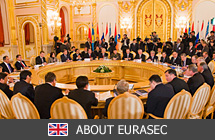
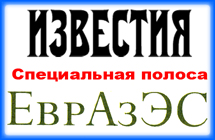
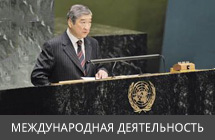

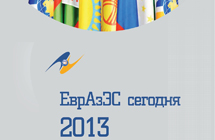
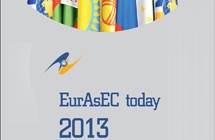
Поиск 10.10.2014 Заседание Межгосударственного совета ЕврАзЭС07.10.2014 Мультимедийная пресс-конференция в агентстве «Россия сегодня»03.10.2014 Встреча с Послом Финляндской Республики04.08.2014 Встреча Генерального секретаря ЕврАзЭС с Послом Республики Таджикистан20.06.2014 Премии Петербургского международного юридического форума «За вклад в развитие правовой интеграции на евразийском пространстве»28.05.2014 Договор о Евразийском экономическом союзе – важнейшее событие в новейшей истории наших стран25.05.2014 Презентация книги «Евразийский проект Нурсултана Назарбаева, воплощенный в жизнь. К 20-летию евразийского проекта 1994–2014»24.05.2014 VII АСТАНИНСКИЙ ЭКОНОМИЧЕСКИЙ ФОРУМ. Панельная сессия «Евразийской экономической интеграции – 20 лет. Итоги и перспективы»24.05.2014 VII Астанинский экономический форум и II Всемирная Антикризисная конференция, 21-23 мая 2014 года, Астана24.05.2014 Петербургский международный экономический форум, 23 – 24 мая 2014 года, Санкт-Петербург |

Евразийское экономическое сообщество
ЕврАзЭС
-
Страны участники
 Беларусь
Беларусь
-
 Казахстан
Казахстан
-
 Кыргызстан
Кыргызстан
-
 Россия
Россия
-
 Таджикистан
Таджикистан
-
 Узбекистан
Узбекистан
-
 Молдова
Молдова
-
 Украина
Украина



